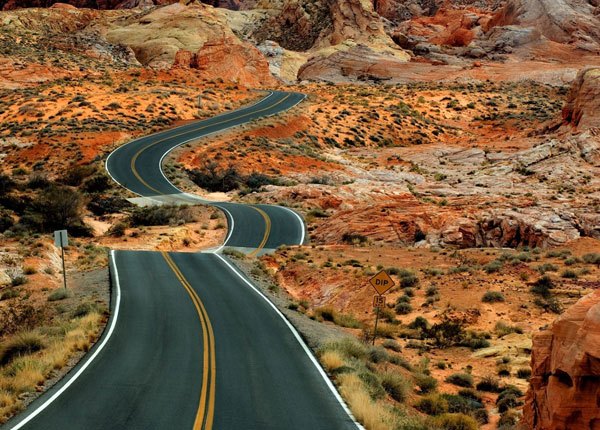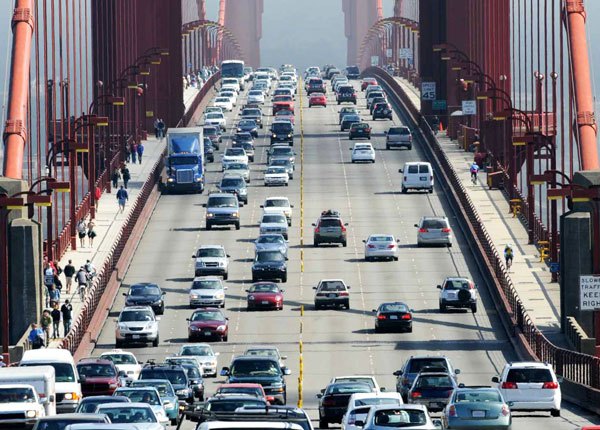
Driving on Hills Like A Pro: Choosing Gears, Tackling Hill Starts & Parking
Updated Dec. 11, 2020Driving on hills presents many of the same challenges as driving on a curved road. Your ability to see opposing traffic may be impeded by the crest of the hill and additional forces will be acting on your vehicle. Whereas centripetal and centrifugal forces will affect your car while driving through a curve, hill driving means you must contend with gravity. The steeper the hill, the greater this effect will be.
If the crest of a hill obscures your view of the road on the other side, you must always assume that vehicles will be approaching from the other direction. When approaching the crest, reduce your speed and move into Lane Position 3. Keep your eyes on the road ahead as far as your line of sight will allow, making any necessary adjustments to lane position and speed as you progress over the hill.
In terms of how gravity will affect your vehicle, keep in mind the following:
- Gravity will be working AGAINST you as you drive UPHILL. You may need to drop a gear and increase pressure on the gas pedal to maintain your speed.
- Gravity will be working WITH you as you drive DOWNHILL. Your car will naturally speed up. You may need to apply the brakes or drop a gear to maintain a safe stopping distance and speed.
Choosing a gear
Yes - you read those last two paragraphs correctly. Dropping into a lower gear will help you to maintain control of your vehicle in both uphill-driving and downhill-driving situations. Of course, this only applies if your car has a manual transmission or multiple automatic drive gears. In a regular automatic with a single drive gear, the car will do the work for you.
- On an uphill slope, driving in a low gear will help to counteract the gravity acting on your car and maintain your speed.
- On a downhill slope, a low gear will stop your vehicle from gathering too much momentum and increasing speed.
Trucks & large vehicles
Large or extremely heavy vehicles often have trouble on steep hills. Depending on the gradient of the upward slope, such vehicles may not be able to gather enough speed to cross the crest of a hill without stopping or rolling backward. On a downward slope, the opposite problem can present itself. A heavy vehicle will have a much harder time managing the force of gravity pulling it forward. With too much speed, a large truck’s brakes may fail, causing the driver to lose control.
Other motorists must be aware of the risks of hill driving when there are large vehicles around and know what to do if something goes wrong. If there is a truck or similarly large vehicle approaching the crest of the hill ahead of you, decrease your speed and maintain a much greater following distance. If the vehicle stops or begins to roll backward, this should allow you enough room to get out of the way.
When you are driving downhill ahead of a large vehicle with the potential for brake failure, keep an eye on your rear-view and side mirrors. If the truck is closing the gap too quickly or emitting white smoke from its sides, pull your vehicle over immediately, moving it as far as possible onto the shoulder. Remember that runaway truck lanes are in place on many highways at the bottom of steep hills. DO NOT block a runaway truck ramp with your car when pulling over, as the truck driver will be relying on it for a safe exit.
Right-of-way on hills
Right-of-way on hills is determined by who can adjust their course to make way with the least risk. If two vehicles traveling in opposite directions meet on a steep, narrow hill, the driver facing downhill must make room for the vehicle facing uphill. This is because one vehicle will likely need to back up away to let the other vehicle pass, and it is far easier to control a vehicle reversing uphill than it is one reversing downhill.
Braking and stopping
Vehicles that stop while driving uphill are at risk of rolling backward. Try and maintain a safe space to the front and rear of your vehicle, in case you or another driver ahead of you must stop. On steep hills, be sure to apply your parking brake while stationary.
Traveling downhill means contending with the force of gravity pulling you forward. It is imperative that you maintain a speed at which your brakes can stop you, if necessary. Many drivers make the mistake of riding the brake to maintain a safe speed while traveling downhill. This will put excessive pressure on your brakes and could lead them to overheat and fail. You should also avoid letting the vehicle coast in neutral or driving downhill with your foot on the clutch. Instead, drive in a low gear to limit the speed of your car.
Parking on hills
Most state driver’s handbooks contain some information on parking on hills. Your manual will likely tell you to turn your wheels toward or away from the curb, based on whether you are facing uphill or downhill. Though it likely will not explain why you should take these measures, or what you must do if there is no curb present at all. It is better to learn the basic theory behind hill parking than simply to memorize a set of rules. This way, you will recall the information and be able to apply to more effectively.
Monitoring engine temperature
Driving uphill puts far more strain on your engine than driving downhill or on a flat stretch of road, as it must work harder to counteract gravity and move the car. The risk of the engine overheating and failing is far greater when traveling uphill – particularly in older vehicles or when the weather is hot.
The smartest way to mitigate this risk is simply to keep an eye on your engine temperature. If it begins to creep up, make a short stop to let everything cool off. Drivers must also keep their coolant levels topped up and stick to a low gear when traveling on long, uphill roads.
Mountain driving
The risk of overheating and engine failure is high when driving on mountain roads. Even when moving through a downhill slope in a mountainous area your vehicle is under more pressure than usual, as high-altitudes can adversely affect steering, brakes, suspension and cooling systems. This risk of something going wrong with one of these components is far greater when your vehicle is old or has not been regularly serviced.
Mountain roads are often not particularly well maintained, so drivers must be ready to reduce their speed to account for poor driving conditions. Keep in mind that weather conditions can be extreme and unpredictable in mountain regions, plus there may be obstacles such as wildlife or rock falls blocking the road. All things considered, mountain driving can be incredibly dangerous.
Stay tuned in to the condition and performance of your vehicle when driving on a steep mountain road. At the first sign of trouble, find a safe space to pull over and let your engine rest or seek assistance. When pulling over is not immediately possible but your engine is in distress, keep moving slowly while sticking to the far right-hand side of the right lane until it is safe to stop.
High altitude driving risks
Let’s talk a little more about the problems your vehicle may face when driving at high altitudes. One of the biggest threats you must contend with is thin mountain air reducing engine power and with it, your ability to accelerate. Performing standard maneuvers such as climbing hills, accelerating and passing other vehicles will become more difficult the higher you get. Keep these limitations in mind while driving on mountain roads and prepare to make adjustments when maneuvering.
At high altitudes, liquids can boil and vaporize at lower temperatures. This is the second big danger you must consider when driving on mountain roads. Gas turning to vapor when your engine overheats is known as “vapor lock” – it can completely disable your vehicle. Vapor lock can occur at high elevations far more easily than it can at sea level. If your engine temperature gauge indicates that the engine is overheating, or the engine warning light comes on, you must seek to cool down your car immediately or risk breaking down.
If it is safe to do so, pull over to the side of the road and let your engine idle as it cools. Switching the vehicle off altogether could cause any fuel already in the engine to vaporize. You can also attempt to cool your engine by activating the car’s heaters to draw excess heat away if pulling over to the roadside is not possible.
Driver health at high altitudes
Your vehicle’s health is not the only thing that may suffer when driving at high altitudes. Human health can also be affected by thin mountain air. “Thin” air has less oxygen than the air most of us are accustomed to breathing at lower altitudes. This lack of oxygen – coupled with poor hydration – can lead to dangerous altitude sickness. To protect yourself when driving at high altitudes, take the following precautions:
- 1

Drink at least twice as much fluid as you would usually.
Water and fruit juices are the best options to maximize hydration and keep blood sugar levels normal. - 2

Avoid drinking alcohol.
Even very small amounts of alcohol that would not usually put you over the legal limit can impede your driving ability at high altitudes. - 3

Avoid salty foods, coffee and caffeinated drinks.
These will worsen dehydration. - 4

Eat little and often – while taking a break from driving.
Choose high carbohydrate, low fat and low protein foods as these will help to maintain normal energy levels.
Remember that even very mild cases of altitude sickness can seriously reduce your reaction time and general alertness. If you begin to feel unwell while driving at high altitude, pull over to the side of the road and take a break at the next safe opportunity.




